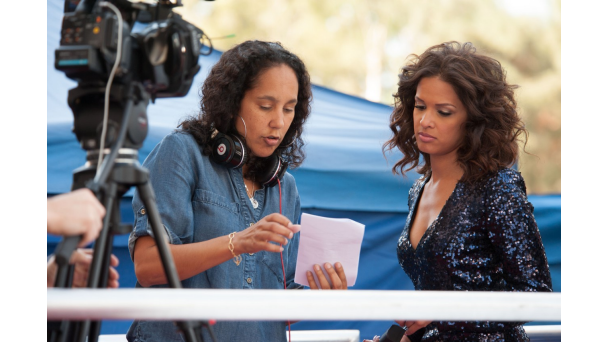
In the wake of last Thursday’s Oscar nominations—and the public protest they incited over the predominantly white and male nominees—a number of studies were released both right before and after the nominations that offer a significant insight into how the lack of gender and racial diversity is perpetuated both on and behind the screen in Hollywood.
While the fact that the Academy’s voting members are 93% white and 77% male has been repeated incessantly since the Oscar announcements, a trio of recent studies highlight the fact that an equally pressing issue lies in who is working behind the camera. With this year’s Oscars representing the whitest group of candidates since 1998, little advancement has also been made in the number of minorities and women employed in key behind-the-scenes roles, with women making up 17% of the directors, writers, executive producers, producers, editors, and cinematographers on the top 250 films of 2014. As the Center for the Study in Television and Film at San Diego State University highlights, this is exactly the same percentage as those employed in 1998.
This goes a ways to explaining why only 37, or 15% of the top-earning films of 2014 featured a lead female protagonist, which is the same percentage as 2013 and a statistic that has remained steady since 2002. And while many of the top-grossing films—including The Hunger Games Mockingjay – Part I, Maleficent, and Gone Girl—of 2014 all featured female protagonists in the lead role, showing that there is a significant appetite amongst filmgoers for female-led movies, there exists a clear resistance amongst those making the choices of which films get made and who is working behind the camera.
The lack of diversity behind the camera also stretches to the small screen, as a five-year study ranging from 2009 to 2014 by the Directors Guild of America found that only 18% of first-time directors of episodic TV shows were women, with minorities only making up %13 of first-time television directors.
These statistics showcasing the lack of women behind the camera are especially pertinent when considering that research shows that there is a 10.6% increase in female characters on screen when a woman is directing and an 8.7% increase when a woman is the screenwriter. With women making up only 7% of directors—down from 9% in 1998—and 13% of screenwriters on the top 250 films of 2014, it is clear that an increase in the presence of women behind the scenes would likely lead to a growth on screen.
And while these recent findings paint a bleak picture for women looking to entering the film and television industries, there are many advocates and organizations out there aiming to reverse this trend and provide avenues to help jumpstart careers. One particularly promising addition to the film festival landscape of 2015 is the inauguration of the Bentonville Film Festival, led by actress and renowned gender activist Geena Davis, which not only showcases only female and minority films, but also awards the inners with theatrical, TV digital, and retail home distribution, making it the only film festival to do so.